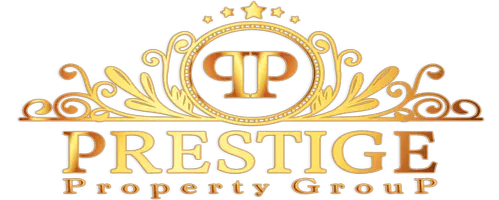Will Medicaid Recovery Take Your Family Home? What Homeowners Need To Know About Long-Term Care
For many American families, an owned home represents their largest asset and a cornerstone of generational wealth—not to mention a source of great emotional resonance.
Unfortunately, as many people age, the costs of long-term care can put that home at risk and disrupt plans to pass their home down.
Many people rely on Medicaid to cover the costs of care once other resources have been exhausted. Understanding how Medicaid works—and its relationship to homeownership—is crucial for anyone planning their estate or helping aging parents navigate their options.
The reality of long-term care, costs, and coverage
Nearly 70% of Americans aged 65 or older will require some form of long-term care during their lifetime, and the costs of nursing homes and assisted-living facilities can run well over $100,000 per year. Such expenses can deplete savings quickly.
Because long-term care costs are so common, and health insurance (including Medicare) typically does not cover them, many Americans actually plan to "spend down" their savings until they qualify for Medicaid, which can cover the ongoing costs of care. To qualify for Medicaid long-term care coverage, you generally need to have limited assets. The exact amount you can have or earn varies by state, but most require very low asset and income thresholds.
Fortunately, if you own your home, that's one asset that is considered "exempt" during the initial Medicaid qualification process. The home exemption applies to your primary residence, regardless of value, in most cases. However, some states do impose equity limits.
This exemption means that you can qualify for Medicaid to pay for nursing home care while still technically owning your family home. Many families find relief in this rule, assuming it means their home inheritance is protected. However, this initial exemption is only part of the story.
Why ‘exempt’ doesn't mean protected indefinitely
While your home doesn't prevent you from qualifying for Medicaid, it doesn't shield the property from future recovery efforts.
Here's what happens in practice: When you enter a nursing home and begin receiving Medicaid benefits, your home remains exempt. You can even return to the home if your health improves. However, once you die, the home's protected status ends, and it becomes subject to Medicaid's estate recovery program.
So, although families often believe that because Mom or Dad qualified for Medicaid while keeping the house, the home is permanently protected, that’s not often the case.
“Medicaid estate recovery is often what people are referring to when they say, ‘The nursing home took my mom’s house,’” explains Kathryn A. Penick, an associate at Knox McLaughlin Gornall & Sennet, PC. “The nursing home didn’t actually take the house. The state put a lien on the house because it was the probate asset of a person who received Medicaid services.”
How Medicaid estate recovery typically works
Medicaid coverage of long-term care isn’t like typical health insurance. There is an expectation of repayment upon your death, which happens through recovery.
Medicaid estate recovery is when states attempt to recoup some of the money spent on a person's long-term care, though the aggressiveness and scope of these programs vary by state. Some states pursue only assets that are in probate, while others allow for extended recovery, meaning they can go after assets held jointly (such as with a spouse), life estates, assets in a living trust, and more.
If the home is the only significant asset in the estate—which is often the case after spending down—the family may be forced to sell it to satisfy the state's claim.
“When clients first learn about Medicaid estate recovery, they often experience significant distress,” says Matthew Erskine, managing partner at Erskine & Erskine. “Most view their home as a legacy meant for their heirs. However, by the time estate recovery becomes relevant—typically when long-term care facility placement is necessary—families face limited options.”
Some protections do exist, including surviving spouse protection, a caregiver child exception, and hardship waivers. But even with these protections, many families find themselves facing difficult decisions about the family home after a loved one's death.
What strategies exist for protecting your home long-term?
Strategies do exist for protecting home inheritance from Medicaid estate recovery, but each involves significant trade-offs and timing requirements.
Transferring the home to an irrevocable trust or gifting it to children can remove the property from the Medicaid estate, but both strategies must be completed more than five years before needing Medicaid to avoid penalties and delayed coverage. Additionally, these approaches mean losing control over the property—you can't sell, mortgage, or modify the arrangement without complex procedures.
“Although the trust is an excellent tool to protect the home, our clients still need sufficient income and assets to support themselves for the foreseeable future,” says Christine Boutin, an elder law and estate planning attorney at Mirick in Massachusetts. “If income is low and there are few assets outside of the home equity, the clients must consider that if they proceed with the trust.”
Gifting to children also creates tax complications, as the children lose the "stepped-up basis" benefit they would receive through inheritance, potentially facing substantial capital gains taxes if they later sell.
Alternative approaches such as life estate deeds allow you to transfer ownership while retaining the right to live in the home for life. Families with adult children who might serve as caregivers can also benefit from proper documentation and planning around the caregiver child exception, which may protect the home if the child provides care to their parent.
All of these strategies, however, have limitations and must be implemented well before long-term care is needed, requiring families to balance protecting inheritance against the uncertainty of future care needs.
Plan professionally, early, and with yourself in mind
There are several recommendations that experts make when it comes to tackling the issue of balancing the need for care with inheritance.
“You should work closely with your financial adviser and estate planning or elder law attorney to discuss your concerns and objectives,” says Penick. “Your financial adviser can assist you with putting proper beneficiary designations on your retirement accounts, brokerage accounts, and life insurance policies.” Your planner and/or attorney will also understand your state’s laws and practices, which will have a major impact on what they pursue in recovery.
Getting started early is also crucial, and that doesn’t mean “before you need care,” but, preferably, many years before.
“Planning strategies often evolve over time. If someone is relatively healthy and they think that they have at least five years before they might need skilled nursing care, we discuss gifting assets, either to family or in trust, to get those assets out of the picture for Medicaid,” says Penick.
Perhaps most importantly of all, keep in mind that Medicaid planning should enhance your options, not create barriers—even if that means prioritizing what you need above inheritance for children and others.
“Clients should understand that using their assets for their own care is entirely appropriate,” says Erskine. “While leaving inheritances is desirable, it should never come at the expense of proper care.”
This intersection of health, care, wealth, and inheritance is complicated and emotionally fraught. Although it may be scary to consider these options, know that facing and getting ahead of them is the surest way to ensure the best possible outcome for you and your loved ones.
Categories
Recent Posts










GET MORE INFORMATION

